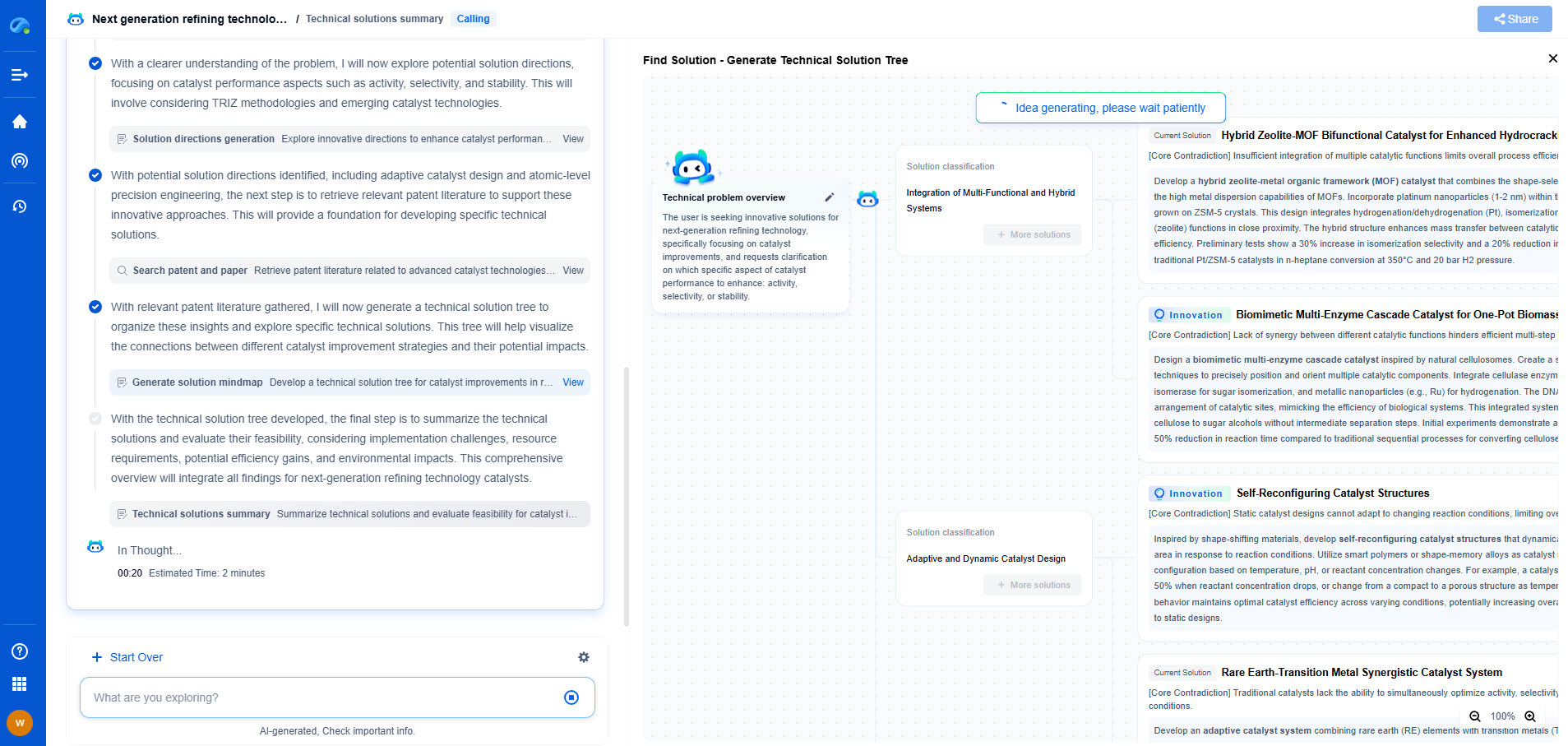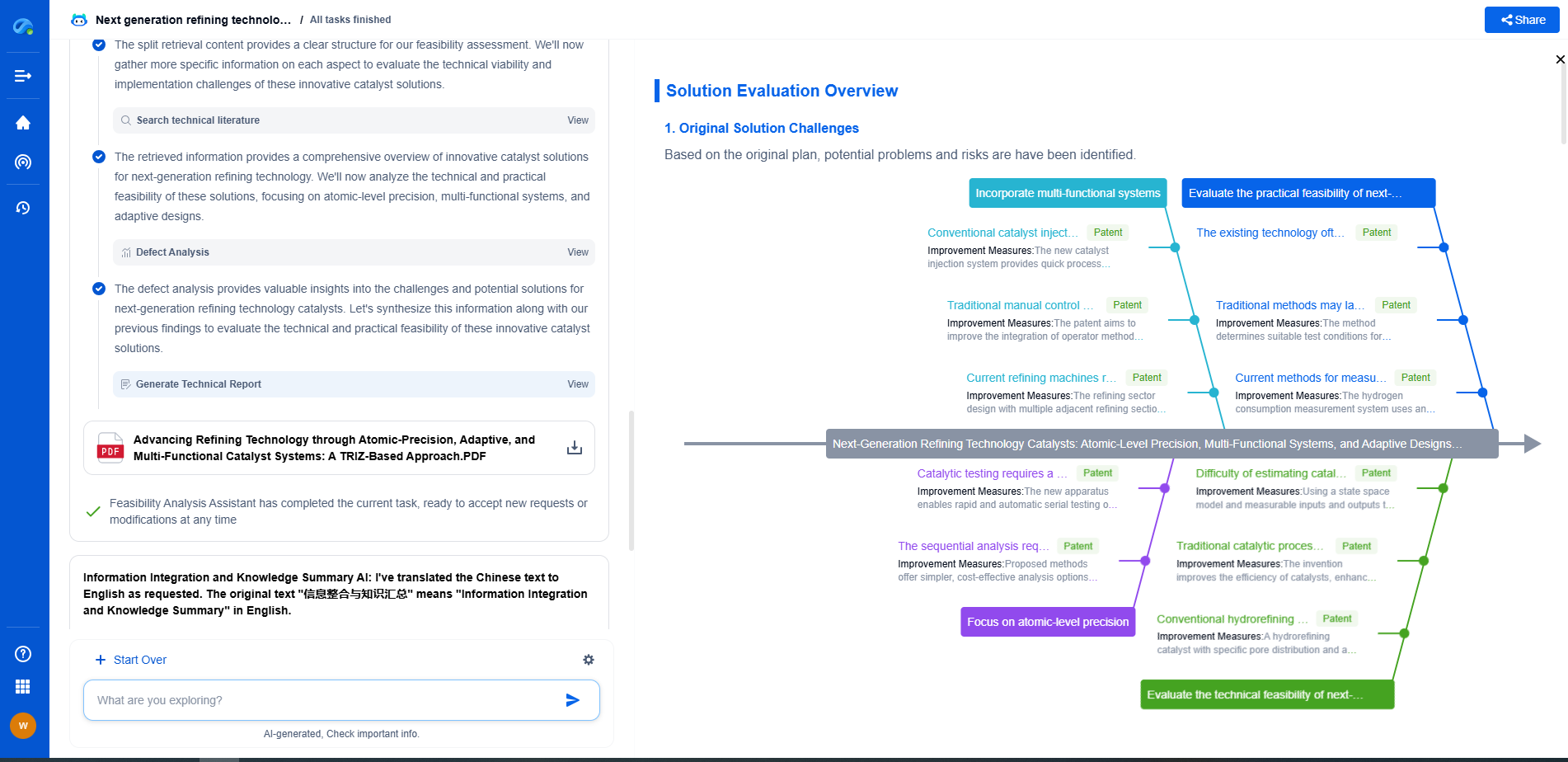Using Transparent Piezoelectric Materials for Touch-Enabled Flexible Displays
JUL 14, 2025 |
In today's rapidly advancing technological landscape, the demand for innovative solutions in display technology is more pronounced than ever. One area garnering significant attention is the development of touch-enabled flexible displays. These displays promise not only enhanced user interaction but also the ability to conform to various shapes, offering unprecedented versatility. Central to this innovation are transparent piezoelectric materials, which form the backbone of this transformative technology.
Understanding Piezoelectricity
To appreciate the role of transparent piezoelectric materials, it's essential to understand the concept of piezoelectricity. Piezoelectricity refers to the ability of certain materials to generate an electric charge in response to applied mechanical stress. This phenomenon is not new; it has been utilized in various applications, from sensors to actuators. However, integrating piezoelectricity into flexible, transparent materials marks a significant leap forward, providing a seamless way to translate touch into electrical signals without compromising the display's visual clarity.
The Significance of Transparency
For any display technology, transparency is crucial. It ensures that the visual content remains unobstructed, providing a clear and immersive viewing experience. Traditional piezoelectric materials often lack the necessary transparency, which limits their application in display technology. The development of transparent piezoelectric materials overcomes this hurdle, allowing for the integration of touch sensitivity directly into the display without any visual interference. This breakthrough enables the creation of displays that are not only touch-sensitive but also maintain high optical quality.
Applications in Flexible Displays
The incorporation of transparent piezoelectric materials into flexible displays opens up a myriad of possibilities. Flexible displays are already making waves in the consumer electronics market, with foldable smartphones and rollable televisions capturing the imagination of tech enthusiasts. By embedding piezoelectric materials into these displays, manufacturers can create devices that respond to touch across any surface or curvature. This feature is particularly advantageous in devices that require a high degree of flexibility, such as wearable technology and automotive displays.
Advantages Over Conventional Touch Technologies
Traditional touch technologies, such as capacitive and resistive touchscreens, have dominated the market for years. However, they come with inherent limitations, particularly when applied to flexible and transparent surfaces. Capacitive screens, for instance, rely on a grid of conductive materials that can be challenging to implement in flexible formats. In contrast, transparent piezoelectric materials offer a more straightforward solution by providing a uniform touch-sensitive surface that adapts to any shape or form. Additionally, piezoelectric materials are less susceptible to environmental factors such as temperature and humidity, making them more reliable over time.
Challenges and Future Prospects
Despite the promising potential, the integration of transparent piezoelectric materials into flexible displays is not without challenges. Manufacturing processes need to be refined to ensure consistency and scalability. Furthermore, researchers are continually exploring new material compositions to enhance performance and reduce costs.
Looking ahead, the future of touch-enabled flexible displays appears bright. As technology progresses, we can expect to see more sophisticated applications, including advanced user interfaces and interactive environments. The continuous evolution of transparent piezoelectric materials will undoubtedly play a critical role in shaping the next generation of display technologies.
Conclusion
The advent of transparent piezoelectric materials marks a pivotal moment in the evolution of touch-enabled flexible displays. By combining transparency, flexibility, and touch sensitivity, these materials pave the way for a new era of interactive devices. As research and development continue to push the boundaries, we can anticipate exciting advancements that will redefine the way we interact with technology in our everyday lives.
From 5G NR to SDN and quantum-safe encryption, the digital communication landscape is evolving faster than ever. For R&D teams and IP professionals, tracking protocol shifts, understanding standards like 3GPP and IEEE 802, and monitoring the global patent race are now mission-critical.
Patsnap Eureka, our intelligent AI assistant built for R&D professionals in high-tech sectors, empowers you with real-time expert-level analysis, technology roadmap exploration, and strategic mapping of core patents—all within a seamless, user-friendly interface.
📡 Experience Patsnap Eureka today and unlock next-gen insights into digital communication infrastructure, before your competitors do.
- R&D
- Intellectual Property
- Life Sciences
- Materials
- Tech Scout
- Unparalleled Data Quality
- Higher Quality Content
- 60% Fewer Hallucinations
Browse by: Latest US Patents, China's latest patents, Technical Efficacy Thesaurus, Application Domain, Technology Topic, Popular Technical Reports.
© 2025 PatSnap. All rights reserved.Legal|Privacy policy|Modern Slavery Act Transparency Statement|Sitemap|About US| Contact US: help@patsnap.com

